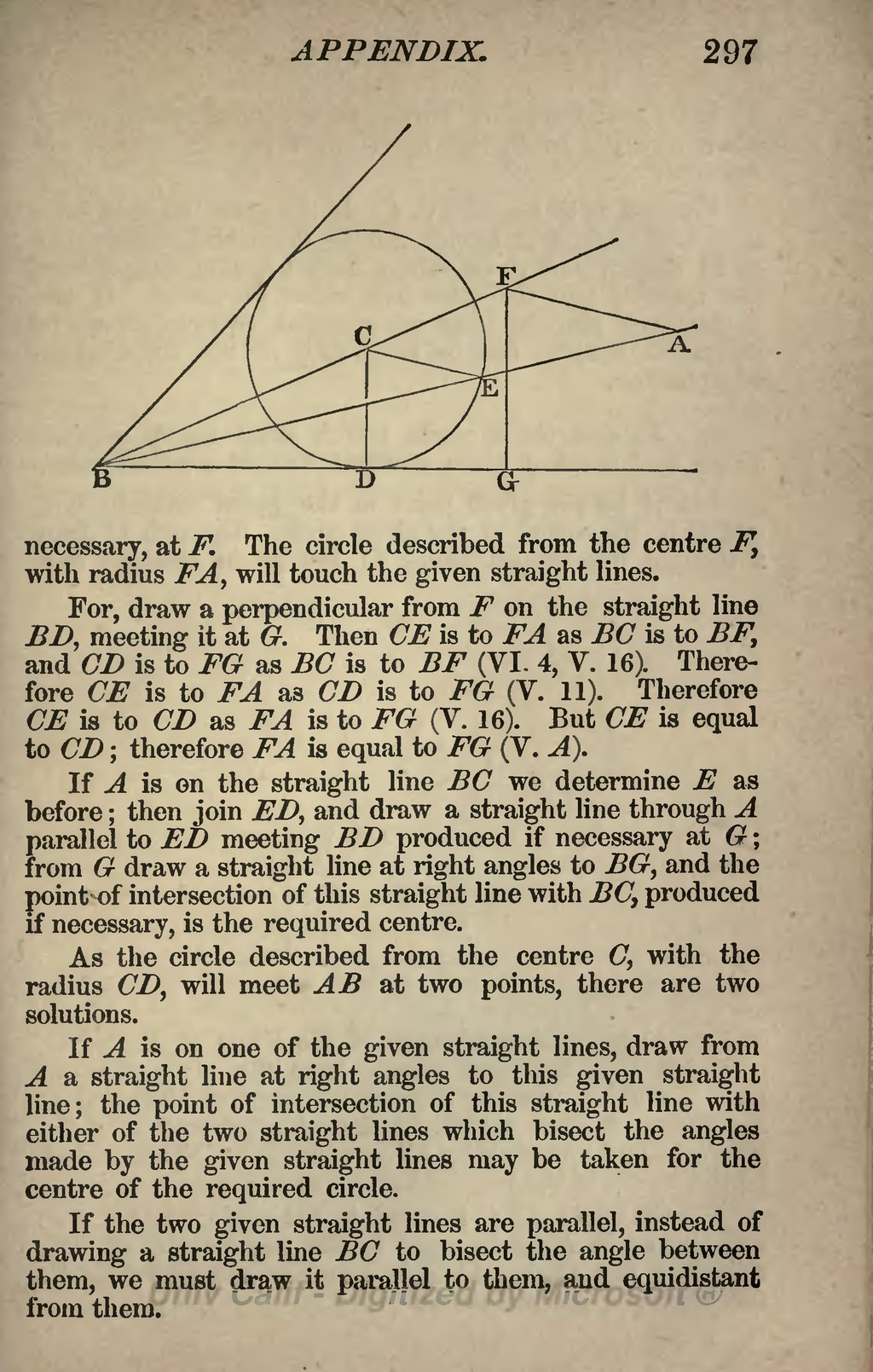 necessary, at F. The circle described from the centre F, with radius FA, will touch the given straight lines.
necessary, at F. The circle described from the centre F, with radius FA, will touch the given straight lines.
For, draw a perpendicular from F on the straight line BD, meeting it at G. Then CE is to FA as BC is to BF, and CD is to FG as BC is to BF (VI. 4, V. 16). Therefore CE is to FA as CD is to FG (V. 11). Therefore CE is to CD as FA is to FG (V. 16). But CE is equal to CD; therefore FA is equal to FG (V. A).
If A is on the straight line BC we determine E as before; then join ED, and draw a straight line through A parallel to ED meeting BD produced if necessary at G; from G draw a straight line at right angles to BG, and the point of intersection of this straight line with BC produced if necessary, is the required centre.
As the circle described from the centre C, with the radius CD, will meet AB at two points, there are two solutions.
If A is on one of the given straight lines, draw from A a straight line at right angles to this given straight line; the point of intersection of this straight line with either of the two straight lines which bisect the angles made by the given straight lines may be taken for the centre of the required circle.
If the two given straight lines are parallel, instead of drawing a straight line BC to bisect the angle between them, we must draw it parallel to them, and equidistant from them.
